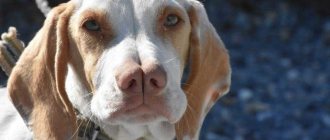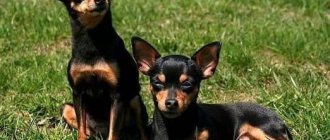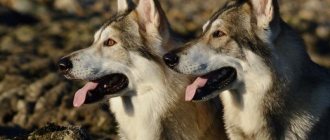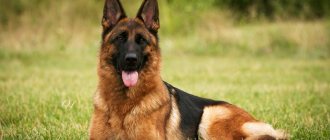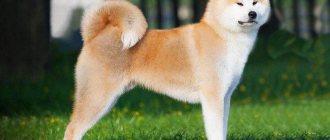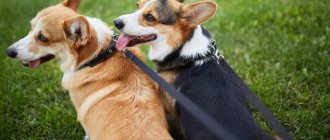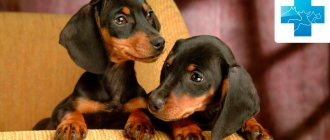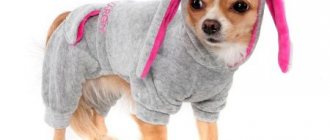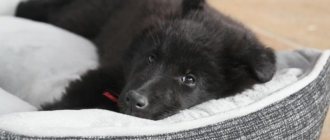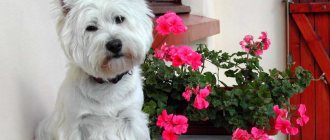Home » Dog Breeds
Did you know that dogs may have been first domesticated in Africa? Many scientists support this version. As a result of many years of isolation, many original and distinctive breeds appeared in Africa. However, before purchasing such a puppy, it is necessary to take into account some nuances related to the nature of the pets.
- 2 Rhodesian Ridgeback
- 3 South African Boerboel
- 4 Azawakh
- 5 Africanis
- 6 Arabian Greyhound
Breed characteristics
| Short description | |
| Origin: | Africa |
| Conditions of detention: | Apartment, house, outdoor maintenance, enclosure |
| Purpose: | Guard dog |
| Color: | Shades of brown (black mask required) |
| Wool length: | Short |
| Adult dog size: | Female height – 59-65 cm, male height – 64-70 cm, weight – 60-90 kg |
| Average life expectancy: | 9-11 years |
| Walk: | Walking twice a day is required |
| Physical activity needs: | High physical activity needs (daily walks for 1-1.5 hours and regular strength training) |
| Fédération Cynologique Internationale (FIC) classification: | The breed is not recognized by the FCI, but belongs to group 2: pinschers and schnauzers, molossians, mountain dogs and Swiss cattle dogs; sections 2: Molossians |
| Puppy price: | From 10 to 50 thousand rubles. Without pedigree - 10 thousand rubles, pet class - 15-25 thousand rubles, breed class - 30-40 thousand rubles, show class - up to 50 thousand rubles |
Rhodesian Ridgeback
The Rhodesian Ridgeback is the only South African breed recognized by the FCI. These are hardy and fast pets that can play sports professionally and be used as hunters and guards. The main disadvantage of the breed is its strong pursuit instinct. Most often, Rhodesian Ridgebacks do not get along with other pets. However, this can be smoothed out if you take the puppy into a house that already has an adult animal.
The weight of the breed reaches 41 kg
History of the origin of the species
The breed belongs to the Molosser breed - a group of mastiff-type dogs distinguished by their strong build, folds on the muzzle and warlike appearance. It is believed that the first such dogs appeared in Asia, after which they were transported to Egypt.
Together with Alexander the Great, dogs came to Europe, where they laid the foundation for most gladiatorial fighting breeds.
The history of Boerboels is based on several precise facts. Firstly, animals appeared in Africa only thanks to immigrants from Denmark, Holland and Norway. People traveled to the southern part of the continent and took their dogs with them.
One of the main points of formation of European communities was the city of Cape Town. The man needed help: protecting his home from large animals (lions, cheetahs), hunting them, transporting food on a cart. Molossoids coped well with these functions, but few pets survived in conditions of unbearable heat and severe physical exertion.
The name can be deciphered in two ways. The newly formed tribes of Europeans in Africa were called Boers, which is where the first part of the name Boer came from. In addition, from Dutch it is translated as “farmer” or “peasant”. Bull means "large Molossian dog" or "mastiff".
In the 19th century, during colonization, the British moved to the continent, taking with them Bulldogs and English Mastiffs. And since 1928, the diamond mining company has been importing Bullmastiffs to guard its branches. It is believed that these breeds mixed with the blood of the modern Boerboel.
Due to prolonged lack of recognition, dogs lose their value. A developed society strives to acquire registered official breeds. Boerboels remain forgotten and practically disappear by the 70s of the 20th century. But in 1980, enthusiast Lucas van der Merwe began an expedition to search for purebred individuals. About 72 dogs suitable for breeding were found.
Later, clubs of amateurs and breeders were created, but African individuals in many ways did not reach European and American ones. Often we came across mestizos with an unbalanced character and a broken nervous system. Because of this, control over the breed has practically disappeared.
Now it is difficult to predict how a puppy will grow up, so in many countries dogs are classified as especially dangerous. Boerboels are not recognized by the world organization.
Arabian greyhound
The Arabian Greyhound is a graceful and majestic dog with a light bone structure. Her movements resemble a cheetah. Servants can be affectionate towards their family members, but do not tolerate the presence of strangers. This is due to its protective qualities. Like some other African breeds, Arabian greyhounds are not prone to unconditional obedience. It will be impossible to teach them tricks and force them to perform them. But this is a smart hunter who can pleasantly surprise the owner. Traditionally, these dogs are used to hunt hares, gazelles and even wild boars.
Another name for the breed is Slugi
African dogs are not affectionate sissies, but stern guards and hunters. They had to survive in difficult conditions, they were bred exclusively as working animals, so they treat people with restraint. If you want to buy an African breed dog, get ready for the fact that you will have to cope with the ambiguous temperament of your pet.
Source
Distinctive features
These dogs have all the external qualities of mastiffs: a large and strong body of an elongated format, a large head with a strong jaw and a wide muzzle, wrinkles on the face, pronounced outlined muscles. The animal is large, males can reach 70 cm , and females 65 , weight sometimes reaches 70-90 kg . The gender type is clearly expressed, girls are smaller and more harmonious than males.
- The head is medium-sized, short, wide and deep, flat between the ears. Stop is expressed. The cheekbones are large and sinewy. The furrow between the eyes is visible.
- The muzzle is longer than the head, wide and square, slightly tapering towards the nose. The bridge of the nose is straight. The jaw is strong with a full set of teeth. bite (the upper teeth overlap the lower teeth). Lips are soft and dense. The upper one overlaps the lower one (thin, not jagged), but does not reach the edge of the jaw.
- The nose is large with open nostrils, black.
- The eyes are round, set straight, wide and deep. Covered with black eyelids. The color of the iris is brown (dark).
- The ears are semi-erect, set high and wide. The shape resembles a "V". When active, they rise.
- The body is long, rectangular, well built, strong. The back is wide, straight, muscular. The loin is convex. The chest is well descended. The neck is short with a convex scruff.
- The tail is set high, carried above the loin, thick and strong. It is customary to dock at 2/3.
- The limbs are muscular, straight and parallel. The paws stand straight, large, gathered into a ball. The movements are confident, powerful, with a good rear push.
- The coat is short, hard, smooth and dense.
- The skin fits tightly, and thin folds form on the muzzle.
- Color: shades of brown, red, brindle.
Coton de Tulear
There are also miniature breeds in Africa. For example, Coton de Tulear. These dogs grow up to 27-28 cm at the withers. They have a friendly and calm character. They are perfect for living even in a small apartment. But these animals take a lot of time to communicate. Dogs cannot stand being left alone for long periods of time. The Coton de Tulear is a breed originating from Madagascar. Residents of local tribes were fascinated by the miniature dogs of Europeans. They bought them for themselves and kept them, breeding them for centuries. The existence of the breed was first learned only in the 1960s, and it was officially registered quite recently - in 2014.
Psychologists base their theories on the behavior of 15% of the population
What structures a person: Yulia Menshova spoke about the benefits of keeping diaries
The authorities advised Russian tourists not to leave the country for the May holidays
Photo of an adult dog
Feeding
For South African Boerboel dogs, natural nutrition is preferable. The diet should include
- fresh lean meat (40-50% of the total food);
- fermented milk products (necessarily low-fat cottage cheese);
- cereal porridge;
- Boiled river and sea fish;
- boiled eggs;
- boiled vegetables.
Attention! It is strictly forbidden to give South African Boerboels sweets and confectionery. This can destroy your dog's teeth and cause diabetes.
If you give your animal ready-made food, choose the appropriate breed and feed according to the recommendations given on the package. Be sure to provide water for dogs.
Photos of puppies
Features of character and behavior
According to the standard, the Buley's temperament is described as calm and balanced. Dogs are characterized as intelligent, trainable, confident and courageous. A distinctive feature is a strong guard instinct.
Since the 20th century, low-quality breeders have been breeding mestizos, which are difficult to distinguish from purebred individuals. Because of this, the quality of the breed line deteriorates. The Boerboels gained notoriety precisely because of the unblocking of an aggressive gene among mixed animals.
Original purebred dogs do not allow themselves to bite or offend a person if they are properly raised.
Advantages
Breed advantages include:
- Strong guard instinct, but at the same time moderate temperament;
- Loyalty, calmness, poise;
- Restraint towards strangers when properly trained;
- Love for children;
- Obedience, high intelligence, good training abilities;
- Ideal physical characteristics, strong immunity, endurance;
- Loyalty to the owner and family.
Flaws
Disadvantages develop in individual individuals due to poor quality education or illiterate maintenance. Heredity definitely also influences a puppy's personality. Before purchasing a dog, it is important to ensure the purity of the pedigree line.
Common breed disadvantages include:
- Tendency to dominate among people and other animals;
- Strong dislike for other dogs, especially males;
- Instability of behavior from individual to individual;
- Bullies can be overly aggressive and uncontrollable;
- They require careful professional training and constant education.
Africanis
- Height: from 50 to 62 cm
- Weight: about 35 kg
- Life expectancy: 9 to 12 years
- Average cost: about $650
The nickname "African Dog" best describes this nomadic classic herding breed, as Africanis are the true embodiment of the indigenous dogs of the dark continent south of the equator. With a strong protective instinct (thanks to centuries of experience protecting human settlements and livestock), this breed makes family loyalty a priority.
Did you know that this is one of the few dog breeds in the world that developed and is still developing without human intervention.
These friendly and highly athletic dogs are naturally people-oriented and enjoy spending time with them, such as hiking, running, and agility training.
Care and maintenance
Bulls are kept both in apartments and in private houses. Although dogs of this size do need a lot of free space. Animals are well adapted to life on the street, but in the winter it is advised to move pets indoors.
If Boerboels are kept in an enclosure, then frequent contact with the owner and family is necessary. The dog is human-oriented, so it urgently needs company. There must be a canopy and an insulated corner with a soft lounger. When keeping a pet at home, a kennel or a separate mattress is equipped for the pet, preferably in a corner without drafts.
Before buying a puppy, you need to acquire all the necessary items: bowls on stands, toys, hygiene products.
In general, the breed is unpretentious. Bullies do not require frequent hygiene procedures and long walks. They are suitable for active people who are willing to spend time training and teaching their pet.
Nutrition
The Boerboel needs high-quality nutrition to restore energy after prolonged training. These dogs usually need a little more than 700 grams of food. The portion varies depending on the Bull's activity, time of year (he will need more food in winter) and the dog's weight.
Puppies need frequent feeding. After 3-4 weeks, the pet stops drinking mother's milk, and from that moment on, bait is used. Feeding occurs 5-6 times a day until reaching 3 months . Starting from six months, food is reduced to 3-4 times , and by the age of one year they are fed 2 times a day. After the dog's teeth change, large, hard pieces are given.
Depending on preferences and the amount of free time, you can choose dry or natural food. Most breeders choose the first option; it is easy to use and does not require much time. In addition, dry food contains all the necessary vitamins and minerals to support the animal .
When choosing a product, you need to consult with other breeders, read reviews and check the composition for the presence of questionable substances.
Poor quality food can harm your pet’s digestive system and cause allergies.
The ideal option would be premium food for large breeds with high activity.
With a natural diet, the Boerboel menu should include:
- Sea fish, always boneless and boiled;
- Chicken, beef, rabbit and lamb;
- You can give eggs 2 times a week;
- Rice, buckwheat, oatmeal;
- Fruits and vegetables;
- Dairy products.
Do not give fatty meat (pork), potatoes and other vegetables rich in starch; butter; citrus fruits and some fruits (melon, grapes); legumes
Drinking regime is an important component of an animal’s diet . Some puppies cannot drink on their own; in such cases, it is necessary to water the animal using a syringe or pipette. Your pet should always have a bowl of water freely available.
We recommend that you read a detailed article on the topic: “How and what to feed a dog: types and characteristics of nutrition.”
Health
The breed is truly hardened by high temperatures and serious physical work. In the process of evolution, only the strongest and most resilient individuals remained.
But due to his heavy build, the joints and the entire musculoskeletal system take the blow. Animals do not live long, about 9-11 years, although they are distinguished by good health and immunity.
Vaccinations
Like all dogs, Boerboels need to be vaccinated.
Puppies are very susceptible to infections, especially before they are one year of age. It is at this time that the main vaccination is carried out.
It is worth understanding that vaccination does not provide complete protection against viruses, so you need to monitor who the animal communicates with and what it picks up on the street. In case of illness, an unvaccinated animal will most likely not be able to cope with the virus.
The first vaccination is carried out in the nursery. Employees issue a veterinary passport and hand over the animal with its vaccinations. After this, you need to follow a schedule for repeating procedures.
- General vaccination is done at the age of 2, 2.5 months, at six months and one year of age. Afterwards it is repeated annually at the same time;
- The rabies vaccination is given at 7 months of age and repeated every year.
Important article on the topic: “Everything you need to know about dog vaccinations.”
Diseases
Diseases characteristic of the breed:
- Joint dysplasia (an incurable disease characterized by severe pain, deformation of the paws, lameness);
- Arthritis;
- Ligament ruptures;
- Dysbacteriosis;
- Otitis.
Walk
Despite their large size, pets do not need long walks. Moreover, at a young age, heavy physical activity is contraindicated for these dogs. Usually, Boerboels are walked 2 times a day for 1-1.5 hours . Active training is done no more than 2-3 times a week.
Puppies are accustomed to the street after the second vaccination. They do this gradually. In the first week, they are carried out in their arms and introduced to the area. After this, they are taken out on a leash. The pet is prepared for crowded places, introduced to individual pets and strangers.
These dogs are not allowed to be let off leash. But they need to run free to release their energy. To do this, Buhl can be taken outside the city or to a prison. Equipped agility areas and equipped dog parks are suitable for training.
Animals cannot tolerate cold. Therefore, in winter they are dressed in protective, insulated overalls. In summer, direct sunlight should be avoided, despite the fact that the breed is accustomed to hot climates.
Grooming
The short coat of the Boerboel does not require any special care. They are brushed 2 times a week with a gloved brush, more often during seasonal shedding. Bathed 2 times a year. In the winter season, water procedures are not recommended. Pets cannot tolerate drafts. Although rubbing with snow can be useful. You can use dry shampoos or simply brush the coat with a towel.
Eyes and ears are examined daily and wiped with a damp cloth 2-3 times a month. Brush your teeth once a week with toothpaste or chewing cords. Claws are trimmed as they grow, if they do not grind down on the asphalt.
Animals are treated regularly for fleas and ticks during the warm season. Worms are cleared with medication every two months.
Slugi
Slugs are large dogs, growing up to 75 cm at the withers. This is the name given to a breed of reserved but very affectionate dogs. They are originally from North Africa. Slugs are a rare breed, and their puppies are not cheap. For centuries, these dogs hunted small game along with the Egyptians and Berbers. Now slugs are a completely domestic breed; they can live in apartments. But keep in mind that to maintain health they need to move a lot.
Found a violation? Report content
Mating
By 10 months, the Boerboel becomes sexually mature. to carry out mating only starting from 20-25 months, when the female is already fully developed and is able to bear strong offspring. The best time to start mating is considered to be the 15th day from the start of the 3rd heat. During this period, the discharge becomes lighter and the loop loosens.
If the pets have a pedigree and have status, then the procedure must take place in a nursery. You need to fill out a form and receive a certificate. You should agree in advance on the price and date of mating; most often it is indicated by the owner of the male.
- First you need to introduce the animals and walk them together. This should take about 15 minutes.
- Then, a girl is brought to the cable territory, this is done so that the boy feels confident.
- The act lasts about 15 minutes; during the process you need to support the female under the belly and by the head.
- The boy is sent to the noose. The lock will take place after several active aftershocks. The next mating should be repeated after 2 days.
Read a detailed article on the topic: “Everything you need to know about breeding dogs: appropriate age, what to do if it doesn’t work out, rules and tips.”
Abyssinian sand terrier
- Height: from 39 to 52 cm
- Weight: from 9.5 to 17.7 kg
- Life expectancy: 12 to 15 years
- Average cost: unknown
One of the most unique African dog breeds is the Abyssinian Sand Terrier. Also known as the African Hairless Dog, this motley dog is native to Abyssinia, now present-day Ethiopia. Few facts have been collected about the origin of the Abyssinian sand terrier. One of the first specimens brought to Europe is on display in the dog gallery of the British Museum of Natural History in Tring.
Fun fact: People used to believe that the Abyssinian Sand Terrier had magical healing powers , so its warm body was used to warm the bed in winter and heal pain or aching joints.
Representatives of this breed have virtually no hair on their body, with the exception of a few tufts on the head and tail, and some individuals are completely hairless. Interestingly, this very rare breed of African dog is considered the progenitor of some modern hairless dog breeds, including the Chinese Crested Dog.
Key points in training
Training Bulls is a responsible business. These dogs are prone to dominance over humans, so from the first days the owner must show his superiority and leadership in the family. The pet must clearly understand that it is impossible to manipulate, understand the basic rules of behavior: you cannot bite household members, pull the leash, beg, eat from the table or from your hands, pick up garbage from the floor and ground.
Training begins at 4-5 months. Then the animal is taught basic commands. You can give your pet to a kennel club for fostering. There, experts will advise a specific direction of training.
The use of cruel methods is prohibited. You cannot beat a dog or mock it.
Reprimand, a stern look, or a shout will do. In extreme cases, when the pet becomes uncontrollable, it is advised to press it to the ground and hold it until it comes to its senses.
Read about how to properly train a dog in the article: “Training a puppy: effective methods from dog handlers, learning commands at home.”
Basenji
The Basenji is a unique dog. She cannot bark, so she is well suited for those who do not like overly sociable pets. However, this breed has another problem: the owners claim that Basenjis are more cat-like in character than dogs. They are independent and almost never become attached to their owner. This is a wayward breed. Basenjis can be touchy and vindictive. Despite the lack of barking, this is still not the quietest companion, because they can howl and whine, and in addition they are also very active.
This breed is perfect for keeping in a city apartment.
